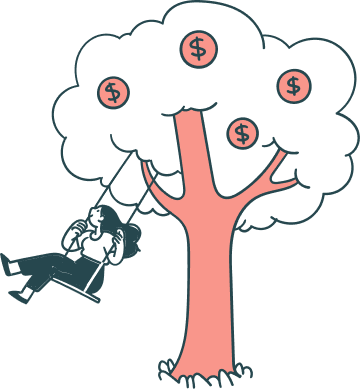As your nonprofit develops a marketing strategy, your goal will be to stand out from similar organizations and help your audience connect your marketing materials back to your organization. An essential tool that fulfills both of these purposes is your nonprofit brand.
You’re probably familiar with the idea of branding as it applies to for-profit companies’ selling their products and services to customers. For example, you’d probably recognize the Nike swoosh or McDonald’s golden arches anywhere. Nonprofit branding includes some of the same elements as for-profit brands, like logo design, colour schemes, and messaging strategies. However, the main purpose of your nonprofit’s brand is to allow audiences to form meaningful connections with your mission rather than a product you’re selling.
Developing a brand for this purpose can become complicated when you consider the complexity of a nonprofit’s audience. Your brand needs to appeal to various groups, all of whom have unique interests and further your mission in different ways. In this guide, we’ll look at six audiences to keep in mind when branding your nonprofit:
As you make key nonprofit branding decisions, record them in a single document. This living brand guide will serve as a reference for anyone inside or outside your organization who creates marketing materials for your nonprofit. Let’s get started!

1. Supporters
Supporters are the lifeblood of any nonprofit. They provide key funding, do valuable volunteer work, and make other efforts that allow your organization to fund its mission and increase its impact. To keep them engaged long-term, center their needs and interests in your branding decisions.
Consider how to appeal to your supporters through your nonprofit’s:
- Colours. Colour psychology applies heavily to branding because supporters associate certain colours with characteristics of your organization. For example, green is a favourite colour of environmental nonprofits because of its association with growth and prosperity. Meanwhile, health-related organizations often use red because it represents strength and passion.
- Fonts. To add visual variety and draw supporters in, use two or three brand typefaces across your marketing materials, standardizing one for headings and one for body text. Also, ensure your fonts are easily legible and don’t distract from your message.
- Logo. Use your brand colours and fonts to design a simple but memorable logo, which helps supporters connect the content your nonprofit creates to your mission.
- Imagery. Any graphics or photos you use should reflect positively on your organization, and make sure to consider the emotional response you want supporters to have when they see those images.
Once you record these details in your brand guide, incorporate them into all of your communications, from social media posts to donor thank-you letters. Consistency is key for supporters to have repeated exposure to your various brand elements, which is necessary to create a recognizable brand for your nonprofit.

2. Nonprofit Leadership
Your brand will best reflect your nonprofit if staff members from across the organization have input on developing it. Specifically, they can help in developing a messaging style that will represent your mission. Compare the ways that each of them describe your organization to help develop a consistent tone for your nonprofit’s communications.
Board members can also help in brand development as they represent your nonprofit in addition to providing organizational oversight. Consider what your board members value and how they help connect your community to your cause. Also, creating branded content featuring board members can add a level of authority to your messages while allowing them to express your organization’s importance in the community in their own words.

3. Individuals Your Organization Serves
When considering how your brand appeals to the individuals your organization serves, your primary focus should be on storytelling. Loop’s guide to best practices in nonprofit web design points out that sharing stories about your nonprofit’s impact in your marketing materials can help all of your audiences connect emotionally with your mission. However, you need to do so in a way that considers the needs and interests of those who benefit from that impact.
First, keep each individual’s preferences in mind when you ask them if they’d be willing to share their stories. Some people will be open to sharing publicly how they benefited from your organization’s work, while others may ask that you protect their privacy by not sharing their names or photos.
Once someone consents to sharing their story with your audience, double check with them before you make the story public and run the message by them before posting it. Let them know how you’ll be sharing this message as well. Some common places where nonprofits tell stories include:
- Pull out quotes on your nonprofit website accompanied by photos
- Social media spotlight posts
- Written interviews published in your newsletter or on your blog
- Video testimonials
Pay close attention as individuals tell their stories so you can share the details accurately. Also, make sure to be sensitive in your portrayals of these people but still maintain a tone consistent with your organization’s brand. Include storytelling guidelines in your brand guide to refer back to as you create content that takes this audience into consideration.

4. Corporate Sponsors
Many businesses give back to their communities by sponsoring nonprofits. Large corporations provide sponsorships as part of their corporate social responsibility programs, and smaller businesses often build strong connections with their local communities to help create positive change. According to Double the Donation’s guide to corporate sponsorships, partnering with businesses can boost your nonprofit’s credibility in your community and attract new supporters, besides providing financial support.
When you approach a potential sponsor, they’ll likely look at your organization’s brand as they decide whether to partner with you. To make your brand appeal to corporate sponsors, make sure to:
- Highlight your nonprofit’s values. The most effective sponsorship agreements are made between organizations whose values align, so make sure sponsors can easily recognize your mission through your messaging and visuals.
- Focus on professionalism. In return for their support, your nonprofit will typically promote your sponsor by featuring their name and logo alongside yours in marketing materials. If your branded content looks professional, potential sponsors may be more inclined to support you in return for your promotion.
- Feature past successes. Discuss your impact through stories and statistics when publishing information on your website or reaching out directly to potential sponsors. This shows them that your organization makes a strong impact and is therefore worth supporting.
Your brand guide can also serve as a reference when you create content promoting your sponsors. While it’s important to take their preferences into account, your marketing materials should still reflect your nonprofit’s brand. This creates consistency in your outreach. Plus, if any companies push back against your designs, you’ll have a concrete document to justify your choices.

5. Policymakers
If your nonprofit runs advocacy campaigns, policymakers will likely take an interest in your organization and come into frequent contact with your brand. Consistency in messaging across your branded content is especially important in appealing to this audience because their support is essential to creating positive, lasting change in your community.
In particular, focus on ensuring a strongly written mission statement. Your mission is the driving force behind all of your organization’s efforts, and you should be able to summarize it in a descriptive, actionable sentence. Make sure your statement uses the same tone and word choice as in your other marketing materials. Then, display it prominently on your website so policymakers can find it quickly when they browse your site.
Also, include your mission statement on the first page of your brand guide. This way, you can easily reference it as you prepare communication materials for your audience of policymakers. Doing this is also a general best practice to ensure your entire marketing strategy is mission-driven.
There is a need for nonprofits to cater to a general audience, but prioritizing the specific audiences outlined in this guide will make your brand a more effective tool to further your mission. Remember also that your audiences will change over time, so revisit your branding strategy regularly. Lastly, consider partnering with a creative design agency to strengthen your branding and appeal to all essential audiences. Good luck!

Take a Personalized Tour
Schedule a demo with one of our fundraising consultants. We’ll show you how the Snowball platform has benefited other nonprofit organizations, and how it can help you.



